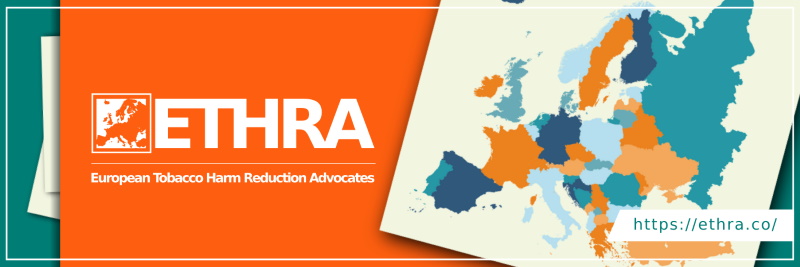Vapers Digest 13th March

Monday’s News at a glance:
CAPHRA Celebrates UK study – 5 Live Attacks Vaping Again – Queensland’s parliamentary inquiry into vaping a political stunt – How can GPs help their smoking patients quit? – A Shift in U.S. Tobacco Regulation – FDA Misses the Point, Again: – Indian Law And Toxic Fumes – The Need to Research Tobacco Control Initiatives – Nicotine Science and Policy Daily Digest
Two from Dave Cross, Planet of the Vapes:
CAPHRA Celebrates UK study
A UK study that once more proves vaping risks are considerably lower than those posed by smoking has been lauded by the Coalition of Asia Pacific Tobacco Harm Reduction Advocates (CAPHRA). The organisation believes the report highlights the need to promote vaping to combat the frustratingly slow decline in global smoking rates.
“Another day and another study proves vaping is considerably less harmful than smoking, yet the World Health Organisation continues its anti-vaping campaign at the cost of millions of smokers’ lives,” says Nancy Loucas, Executive Coordinator of CAPHRA.
5 Live Attacks Vaping Again
“I’m sure you’ll know that [vaping] is a story we’ve spent quite a lot of time discussing on this show,” opened up Rachel Burden, co-host of the 5 Live Breakfast radio show. Burden went on to say they’ve covered many topics over the last twelve months: teen use, teen access, and “we really don’t know what’s in them”.
Rachel Burden says her claim that “we really don’t know what’s in them” is supported by news from the Chartered Trading Standards Institute, which says that 1 in 3 vape products may be falling foul of regulations. In particular, the Chartered Trading Standards Institute says products are breaching the rules regarding nicotine strength and warning labels.
Queensland’s parliamentary inquiry…
Into vaping a political stunt – Colin Mendelsohn
QUEENSLAND IS CONTINUING ITS VENDETTA against vaping, announcing a parliamentary inquiry to investigate the prevalence of youth vaping and to confirm the “potential dangers”. This political stunt is a waste of taxpayers’ money which should be spent on reducing the stagnating adult smoking rates. The motive appears to be to justify further restrictions on vaping.
Queensland has the highest state smoking rate in Australia. The Premier falsely claims that “smoking continues to fall in Queensland”. This is not true. The adult smoking rate has not declined significantly since 2014, as the following graph shows, based on Queensland Preventive Health Survey data.
[EU] EU-Kommission – Konsultation zur TPD3 – Teil 2 https://t.co/YJvu0R1O0c via @DampfFreiheit
— European Tobacco Harm Reduction Advocates (@europethra) March 13, 2023
1. It wasn’t an e-cig; it was a cannabis vape pen.
2. “Cobalt exposure can indeed cause this condition, but it is hard to see how they reached this conclusion given that no cobalt particles were detected in the lung samples from the patient.”#uscap2023https://t.co/RQFVhSd0P8 https://t.co/SLcp7EQZ3J
— Phil (@phil_w888) March 12, 2023
How can GPs help their patients quit?
Dr Alex Wodak
Smoking is still Australia’s leading preventable cause of death and illness. GPs in Australia see over 80% of the population every year, and are well placed to help smokers quit.
But as GPs know, conventional smoking cessation aids are not very effective and quit rates are low.
Also, GPs are very busy and few are comfortable trying to be a quit smoking coach. In addition, few smokers seek help as they think smoking is a lifestyle issue rather than a disease to be treated by a doctor. So, the GP contribution to reducing smoking in Australia has been modest.
A Shift in U.S. Tobacco Regulation
Devin LaSarre
Last week’s rumors became official headlines when tobacco giant Altria announced a definitive agreement to acquire e-vapor company NJOY. Reactions are mixed, with some investors firmly anchored to Altria’s value-destructive JUUL investment, while others consider Altria’s investment track record in its entirety. Instead of concentrating on the deal itself, I am giving today’s focus to a key detail that has received too little attention.
During Altria’s March 6th business update, which primarily covered the NJOY deal, brief mention was given to a report, Operational Evaluation of Certain Components of FDA’s Tobacco Program. The report’s unassuming cover image was also included on slide 9 of the supporting slide deck. But that report is not solely about the U.S. e-vapor category….
FDA Misses the Point, Again:
Reagan-Udall Evaluation – WVA
In 2022 FDA Commissioner Califf announced a review of its Center for Tobacco Products by the Reagan-Udall Foundation. The foundation said that the CTP “has a critical mission to protect the public health from tobacco-related disease and death and is regulating products that have no inherent benefit and huge societal costs, it is a government regulatory program with a duty to run efficiently, fairly, and transparent.” They also reported a lack of clarity and transparency, as well as internal communication issues. Moreover they found that the CTP is not equipped to face the workload that comes with the PMTA process and other regulatory oversights they have been tasked with.
“The almost 40-page report highlighted that Reagan-Udall was “unable to identify a current comprehensive plan that clearly articulates CTP’s priorities, direction for the future, and its near-term and longer-term goals and objectives.”
Indian Law And Toxic Fumes-
The Need To Reconsider Vape Law – Harsh Dabas
With the Incremental upsurge in the usage of Electronic Cigarettes and Vapes among Youth in the past years, the Government of India responded by banning the same in 2019, through the Prohibition of Electronic Cigarettes Act 2019[1]. The ban was based on the recommendations of the Indian Council for Medical Research, the top body for the formulation, coordination and promotion of biomedical research. Further, the Government claimed that the objective of the ban was to protect the Youth, one of the most vulnerable and impressionable sections of Society.
The Need to Research Control Initiatives
Syed Sahim
Tobacco control is not working for most of the world, it is not progressing and maintains the status quo. Interestingly, four out of five of the world’s smokers are in low-income and middle-income countries. There are a few countries that are attributing to this number and death rates linked to tobacco consumption in these countries are almost the same.
Most of the eight million deaths caused by tobacco occur each year, however, rates of tobacco use are falling only slowly. Globally, the overall number of tobacco users has barely changed. This is empirical evidence that proves that tobacco control is failing and requires an urgent overhaul to be effective.
On this Day…2022
A look back at how things have moved on or otherwise…
Gateway effect myth that will never die
Christopher Snowdon, Velvet Glove Iron Fist
From New Scientist…
Vaping probably isn’t a gateway to smoking
You mean people don’t take up vaping and then suddenly decide to do something that is ten times more expensive and a thousand times more dangerous? Who’d a thunk it?
Young people who try vaping are more likely to later start smoking – but a new analysis of trends in nicotine use in England suggests that the so-called gateway theory of vaping isn’t the explanation.
The real reason for the link could be that teens who start vaping are the same ones who are likely to try smoking, regardless of whether they ever have an e-cigarette.Indeed. This is the common liability theory. People with a propensity for risk-taking tend to take more risks than people who are risk-averse. This has always been the obvious explanation for the statistical correlation, such as it is, between vaping and smoking.
Vaping probably isn’t a gateway to smoking – Clare Wilson
82 million vapers worldwide in 2021:
The GSTHR estimate
In 2021, the Global State of Tobacco Harm Reduction (GSTHR) project published the first ever worldwide estimate of the number of vapers, which stood at 68 million in 2020.[i] New data from the February 2021 Eurobarometer 506 survey and other surveys offered a unique opportunity to update that figure. We also modified our projection process by taking both regional variations in market size and the actual year of origin of the underlying data into account. The GSTHR now estimates that there were 82 million vapers worldwide in 2021.
Why are we conducting this research? Nicotine is one of the world’s most popular drugs, alongside alcohol and caffeine. Most people consume nicotine by smoking tobacco cigarettes. The World Health Organization (WHO) estimates that there are 1.1 billion smokers, about one in five of the global adult population. This figure has remained unchanged since 2000.









